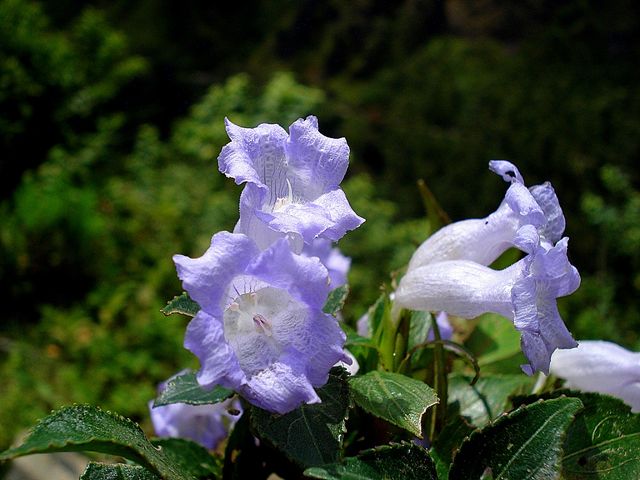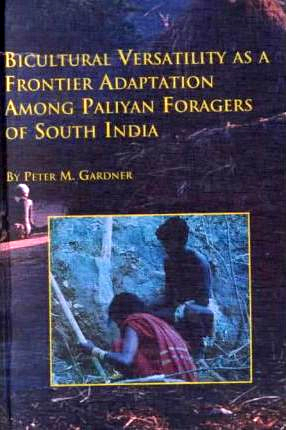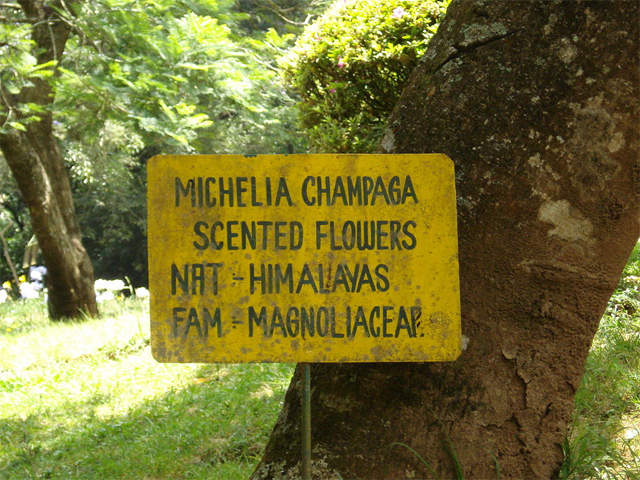Peter Gardner describes the ways the Paliyans employ “a tranquilizer,” a flower that angry individuals crush and press to their foreheads to dissipate anger. In a 1966 journal article, the anthropologist, reviewing several approaches they use for social control, mentions that they use the flowers of sirupani pu, or “laughing flower,” for help in preserving the peace. He notes that sirupani pu has not been identified botanically (at least as of 50 years ago). Gardner argues that the use of that flower is one factor that exemplifies their ideal which, “for Paliyans is that overt aggression or gross disrespect of any other kind will not occur (p.396).”

It is certainly to be expected that flowers would play an important role in the lives of a forest-based society such as the Paliyan. A newspaper article published last week in the Deccan Chronicle describes another traditional use of a flower by the Paliyans. It is a travel piece about the hills around Kodaikanal focusing on the blooming of neelakurinji that is occurring this summer. The spectacle of the hills in bloom attracts tourists.
If the use of a flower for conflict abatement is unusual, neelakurinji is equally strange because it only blooms once every 12 years. The brief travel article in the newspaper states that the hills in the Western Ghats region of India last displayed the blue flowers of the neelakurinji in 2006 and they will next cover the landscape with their patches of color in 2030.
The article indicates that the Paliyan traditionally used the blooming cycles of the plant to calculate their ages. It has been easy for them to figure out how old they are by counting the number of blooming cycles that they have lived through. Each time another cycle would transform the landscape, they would realize they were 12 years older.
 In his book Bicultural Versatility as a Frontier Adaptation among Paliyan Foragers of South India, Gardner mentions other uses of flowers by the Paliyans. For example, in the heat of April and May when the bees are collecting nectar from flowers, the people offer to a caami named Raakkaacci some honey and five different species of flowers, part of a ritual they perform (p.135).
In his book Bicultural Versatility as a Frontier Adaptation among Paliyan Foragers of South India, Gardner mentions other uses of flowers by the Paliyans. For example, in the heat of April and May when the bees are collecting nectar from flowers, the people offer to a caami named Raakkaacci some honey and five different species of flowers, part of a ritual they perform (p.135).
He mentions that kurinca puu, the flower of a digging stick (Strobilanthus kunthianus) and tiru kaLLi puu, the flower of a milk hedge cactus (Euphorbia tirucalli), are offered to the caamis during the honey rituals. The caamis are protective gods or spirits for the Paliyans.

The book describes (p. 237) the different flowers and plants that the Paliyans use for adornment. As examples, Gardner cites the magnolia blossoms, cenpaka puu (Michelia champaca), and a flower from an oleander called araLi (Neriium odorum) which the people wear in their hair.
But the obvious question is, how much do flowers really mean to Paliyans today? A post dated February 20, 2012, by Mr. A. Muthuvezhappan in his blog about the Paliyan society provides some good clues. In one of the paragraphs following the headline “Life Style,” the blogger writes, “Their life style is very simple and sacrosanct. They love to live with nature.”
He describes some of the Paliyan marriage customs and he concludes the paragraph by writing, “The young couple had to … start the new life in the forest. They used Tharanipoo and perandipoo during the marriage feast and the young woman put the Tharanippu garland as a token of love and affection and a symbol of marriage.” It is clear from these sentences that flowers are not only valuable for dating their lives, they also can have symbolic meanings, particularly for love and affection, to at least some of the Paliyans.